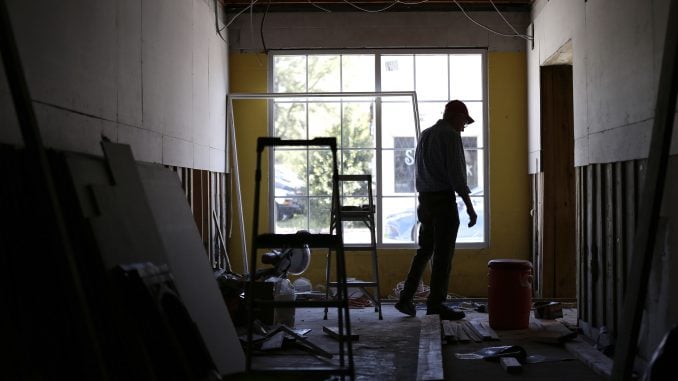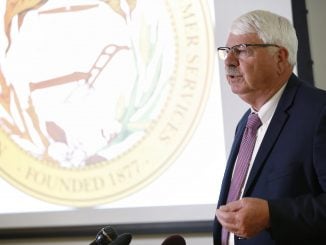
RALEIGH — The U.S Department of Housing and Urban Development’s Office of the Inspector General issued an audit report last month that says North Carolina’s disaster recovery program was not able to provide a “reasonable assurance” that it had property spent $2.5 million in Hurricane Matthew federal disaster relief funds.
U.S Department of Housing and Urban Development’s Office of the Inspector General’s audit (HUD OIG) reviewed North Carolina’s Office of Recovery and Resiliency’s Community Development Block Grant Disaster Recovery (CDBG-DR) funds.
“Because the State did not follow its disbursement procedure and did not fully understand procurement requirements, it could not support that it obtained adequate invoice documentation for issuing payments and prepared independent cost estimates before the bidding process, properly assessed the cost reasonableness of contracts, and assessed contractor eligibility in a timely manner,” the HUD OIG report states in its conclusion. “As a result, the State could not provide reasonable assurance to HUD that more than $2.5 million in CDBG-DR funds was spent properly.”
Hurricane Matthew struck North Carolina on Oct. 8, 2016. HUD appropriated more than $236.5 million in CDBG-DR funding to North Carolina for drawdown based on an Aug. 17, 2017, grant agreement between the state and HUD. Per the HUD OIG report, North Carolina has drawn down $91 million of those funds as of Mar. 22, 2022.
When the grant agreement was put in place in 2017, the CDBG-DR funds were administered by the N.C. Department of Commerce which in turn entered into an agreement with the N.C. Department of Public Safety, Division of Emergency Management to administer the grant funds in late April 2018.
In October 2018, Gov. Roy Cooper approved legislation creating a new entity to administer the funds; the North Carolina Office of Recovery and Resiliency (NCORR). Housed under the State’s Department of Public Safety, NCORR started work in January 2019 and began administering the CDBG-DR funds.
The HUD OIG audit report found the state “generally had capacity” in terms of staffing and “mostly followed disbursement requirements.”
In terms of staff capacity, the audit report states that when they conducted their review, “the internal auditor position was maintained on a part-time basis. However, after we communicated the initial results of our review on January 14, 2020, two internal auditors were assigned specifically to review the disaster recovery funds.”
Auditors looked at a sample of 25 disbursements and found that 3, or roughly 12%, did not have adequate support documentation.
The 25 expenditures totaled nearly $5.5 million (27%) out of 143 expenditures at the time of review totaling more than $20.5 million.
Of the three procurements reviewed that lacked or were missing adequate documentation, the audit report states, “These conditions occurred because the State did not follow its disbursement procedure and did not fully understand the procurement requirements.”
The HUD OIG report also says the state’s procurement policy “did not clearly address the procurement process for its staff to follow.”
“As a result, the State could not provide reasonable assurance to HUD that more than $2.5 million of $5.4 million in CDBG-DR funds reviewed was spent properly,” the HUG OIG audit report concluded.
Findings also highlighted that the North Carolina procurement process “needs improvement.”
“Specifically, the State did not follow procurement requirements for administering CDBG-DR for the contracts reviewed,” reads the OIG HUD audit report. “We selected and reviewed three contracts, representing nearly 82% ($68.6 million) of the universe in dollars from the eight contracts procured by the State totaling more than $83.5 million.”
Additionally, the audit report found that the state did not conduct timely reviews of contractor eligibility and that NCORR “did not fully understand procurement requirements.”
Recommendations in the audit report for the Deputy Assistant Secretary for Grant Programs include requiring the state to provide adequate documentation to support the over $2.5 million in CDBG-DR funds were spent for necessary and reasonable costs or repay the funds, update its procurement policy, and provide training to its staff to ensure that it understands and follows requirements to maintain the necessary support documentation.
The HUD OIG report follows a state-level audit of Hurricane Florence spending release in May that identified $1.28 billion in fund monitoring and accountability issues. N.C. State Auditor Beth Wood’s audit found $502 million in Hurricane Florence Disaster Recovery Funds were distributed with limited monitoring and $783 million was distributed to recipients with no way to measure results.
Earlier this year in July, the legislature announced the formation of a new 15-member subcommittee on Hurricane Response and Recovery (HRR) which will operate under the Joint Legislative Commission on Governmental Operations.
The HRR had its first meeting on Sept. 14, the four-year anniversary of Hurricane Florence. At the meeting, victims of Hurricanes Matthew and Florence gave testimony that years after the disasters they still were not back in their homes.
Also giving testimony during the meeting were Richard Trumper of the Office of State Budget and Management Disaster Recovery (OSBM) and Laura Hogshead and Ivan Duncan of NCORR.
The HRR panel members peppered Hogshead and Duncan with questions related to the lack of progress by ReBuild NC, a program run by NCORR that was established in October 2018 specifically to help families impacted by Hurricanes Matthew and Florence.
Of the 4,100 applications taken since federal funds were received, only 789 projects have been completed per Hogshead’s presentation to lawmakers.
During questioning it became apparent that ReBuild NC operating rate meant approaching federal deadlines in 2025 and 2026 would not be met.
NCORR’s current rate of construction is between five to six houses per month according to Hogshead’s testimony. She also blamed the pandemic for a slowdown in construction.
Hogsheads said in her remarks that 1,100 applicants are currently either waiting to find a contractor willing to do the work or are waiting for work to begin. She also said 294 applicants were still living in temporary housing situations.
“So, we are building 1,000 homes in the same time it took to help 789 people?” Rep. Sarah Stevens (R-Surry) asked Hogshead, who replied with a simple “Yes.”
“Now we’re in a hole so deep that, quite frankly, I don’t think you or your staff can dig yourself out of it,” HRR Co-Chair Sen. Brent Jackson (R-Sampson) told Hogshead.
“You would need a 600% increase in output to meet the Florence deadline, right?” asked Sen. Britt (R-Robeson). Hogshead again responded with a “yes.”
The HRR subcommittee will meet again on Dec. 14 and NCORR has been directed to provide a progress update at that time.



